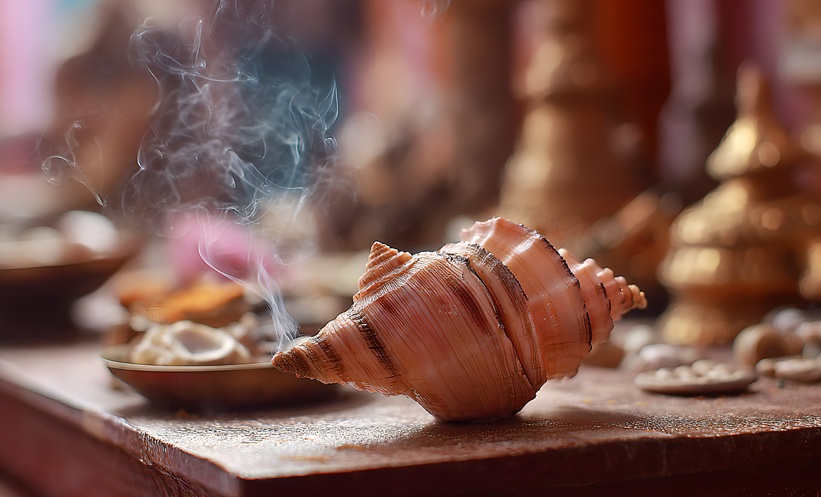A RANDOMISED trial has found that the traditional practice of blowing a conch shell may improve symptoms of obstructive sleep apnoea (OSA), offering an unexpected non-pharmacological intervention for a condition with few lifestyle-based options.
OSA remains a major public health challenge, marked by recurrent upper airway collapse during sleep, excessive daytime sleepiness, and impaired quality of life. While continuous positive airway pressure (CPAP) is the standard treatment, adherence is variable, and alternative strategies are of growing interest. To explore whether respiratory muscle training through shankh (conch shell) blowing could influence outcomes, researchers conducted a prospective, open-label, randomised controlled trial in individuals with moderate OSA. Participants were assigned either the conch-blowing intervention or a sham deep-breathing exercise for 6 months.
Thirty participants were enrolled, with 14 randomised to the intervention and 16 to the control group. At 6 months, the intervention group reported a 34% reduction in daytime sleepiness, corresponding to a mean decrease of 5.0 points on the Epworth Sleepiness Scale (ESS). Between-group analysis confirmed a significant difference of -4.69 points (95% CI: -8.39 to -1.01; p=0.0145). Sleep quality, assessed by the Pittsburgh Sleep Quality Index, improved with a mean between-group difference of -3.1 points, while the apnoea-hypopnoea index (AHI) was reduced by 5.6 events per hour compared with controls.
The trial suggests that shankh blowing may strengthen respiratory muscles, leading to measurable improvements in daytime function, sleep quality, and breathing disturbances. While further large-scale trials are needed, this culturally rooted practice could represent a novel adjunctive therapy for OSA.
Reference
Sharma KK et al. Efficacy of blowing shankh on moderate sleep apnea: a randomised control trial. ERJ Open Res. 2025; DOI:10.1183/23120541.00258-2025.








